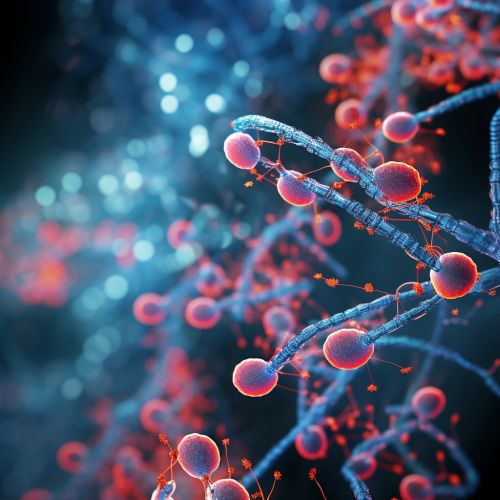Gene Expression
Introduction
Gene expression is the process by which the genetic code - the nucleotide sequence - of a gene is used in the synthesis of a functional gene product. This process involves the production of a molecule, typically a protein, that can perform a function within the cell. Gene expression is a fundamental aspect of Molecular biology and genetics.
The Process of Gene Expression
The process of gene expression involves two main stages: transcription and translation.
Transcription
Transcription is the first step in gene expression. It involves copying the gene's DNA sequence into a molecule of messenger RNA (mRNA). This process is carried out by an enzyme called RNA polymerase. The mRNA molecule then carries the genetic information from the DNA to the cell's protein-making machinery.
Translation
Translation is the second step in gene expression. It is the process by which the mRNA molecule is used as a template to build a protein. This process is carried out by a complex of ribosomes and transfer RNA (tRNA) molecules.


Regulation of Gene Expression
The regulation of gene expression is a complex process that allows a cell to respond to its changing environment. It can occur at various stages in the gene expression process, including at the level of transcription, mRNA processing, translation, and post-translation.
Transcriptional Regulation
Transcriptional regulation is the most common form of gene regulation. It involves the binding of proteins, known as transcription factors, to specific sequences of DNA that control the transcription of associated genes.
Post-Transcriptional Regulation
Post-transcriptional regulation occurs after the mRNA molecule has been produced. It includes processes such as mRNA splicing, editing, and degradation.
Translational Regulation
Translational regulation involves the control of the protein synthesis process. It can occur through modifications to the mRNA molecule that affect its stability or its ability to be translated.
Post-Translational Regulation
Post-translational regulation involves changes to the protein after it has been synthesized. This can include modifications such as phosphorylation, methylation, and acetylation, which can affect the protein's function.
Gene Expression in Different Organisms
Gene expression can vary greatly between different organisms, and even between different cell types within the same organism. This variation is largely due to differences in gene regulation.
Prokaryotic Gene Expression
In prokaryotes, such as bacteria, genes are often grouped together into operons. An operon is a group of genes that are transcribed together into a single mRNA molecule. This allows the genes to be co-regulated and expressed at the same time.
Eukaryotic Gene Expression
In eukaryotes, such as plants and animals, genes are typically transcribed individually. However, they can still be co-regulated through the use of shared regulatory elements.
Techniques for Studying Gene Expression
There are several techniques that scientists use to study gene expression. These include:
Microarrays
Microarrays are a high-throughput technology that allows for the simultaneous measurement of the expression levels of thousands of genes.
RNA Sequencing
RNA sequencing is a technique that uses next-generation sequencing technology to determine the sequence of an RNA molecule. This can provide information about the gene's expression level and its sequence.
Quantitative PCR
Quantitative PCR is a technique that can be used to measure the amount of a specific RNA molecule in a sample. This can provide information about the gene's expression level.
